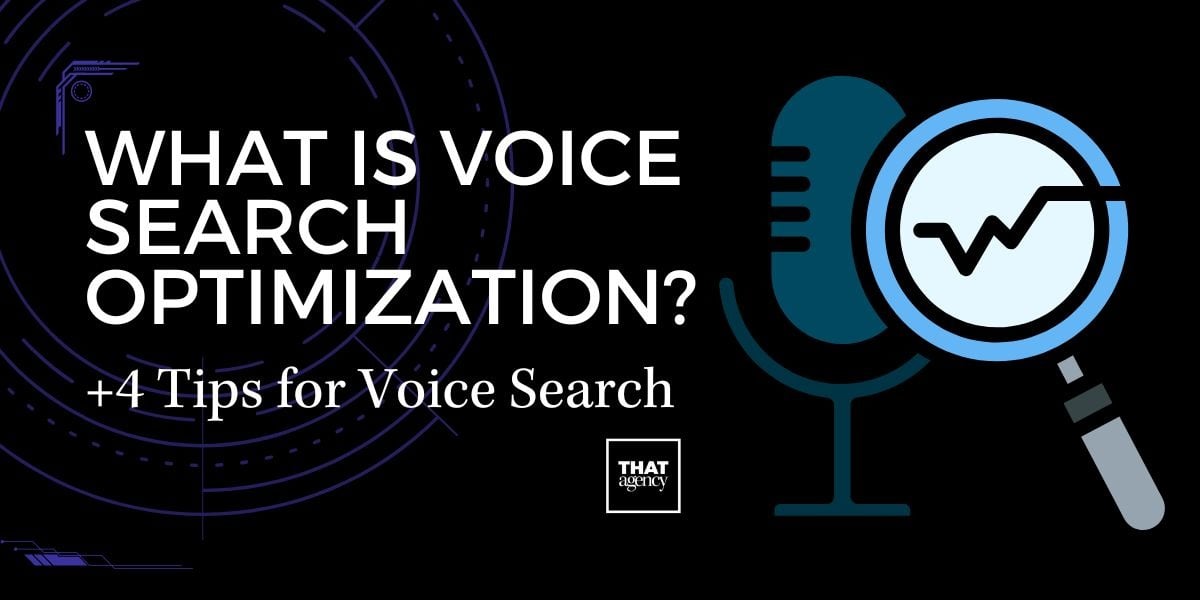Sometimes your business needs a fresh start. Maybe you’re changing your name, updating your logo, or shifting to a new market. That’s where digital rebranding comes in. But while you're focused on the new look and message, it’s important not to forget about something just as important, your SEO.

If you’ve worked hard to build your website traffic and search engine rankings, the last thing you want is to lose it all during a rebrand. The good news? You don’t have to. In this blog, we’ll show you how to relaunch your brand online without losing your SEO value. We'll also explain how your content marketing strategy plays a big role in keeping your rankings strong.
What Is Digital Rebranding?
Digital rebranding means changing the way your brand looks and sounds online. This can include:
- A new business name or logo
- A new website or domain name
- A different target audience
- Updated colors, styles, or messaging
Businesses often rebrand when they grow, change direction, or want a fresh look. It can help bring in new customers and build a stronger identity. But if you don’t plan carefully, your website traffic and search engine rankings can take a big hit.
Why SEO Can Suffer During a Rebrand
When most people think of rebranding, they picture new logos, fresh colors, and updated messaging. But digital rebranding is more than just a new look — it affects your entire online presence, including your search engine optimization (SEO).
If you're not careful, you could accidentally damage your SEO, which means fewer people find your website through Google or other search engines. Let’s explore why this happens and how you can avoid it.
How Rebranding Affects SEO
Search engines, like Google, use clues from your website to decide what your business is about and whether it's trustworthy. During a rebrand, these clues can suddenly change, which may confuse search engines or cause them to stop showing your site in search results.
Here are the main ways your SEO can suffer during a rebrand:
Broken Links (404 Errors)
What it means: If you delete or change web pages without setting up redirects, old links pointing to your site will no longer work. This causes "404 Not Found" errors.
Why it's bad for SEO:
- Search engines don’t like broken links — it tells them your site isn’t being maintained.
- Visitors who land on a broken page may leave your site right away (this is called a high bounce rate), which can hurt your SEO rankings.
Lost Keywords
What it means: When you rewrite content or change your page URLs during a rebrand, you might remove or change the keywords that helped your pages rank high in search results.
Why it's bad for SEO:
- Keywords are what help people find you. Removing them could drop your rankings.
- Even if your content looks better after a rebrand, it might not perform as well if it’s missing important SEO terms.
What to do instead:
- Keep the keywords that bring in traffic.
- Update content with your new brand voice, but keep your SEO in mind.
Drop in Traffic
What it means: If search engines don’t understand your changes or can’t find your pages, your traffic (the number of visitors to your website) can drop.
Why it's bad for SEO:
- Lower traffic means fewer leads, fewer sales, and less visibility for your brand.
- It can take a long time to recover if you lose rankings and your site disappears from search results.
Common causes of traffic loss:
- Moving to a new domain without telling Google
- Failing to update your sitemap or internal links
- Forgetting to submit your new site structure to Google Search Console
Brand Confusion
What it means: If your new branding (like your name, tagline, or logo) isn’t clear or consistent, both search engines and users may not recognize you.
Why it's bad for SEO:
- Search engines rely on consistency. If they don’t recognize your brand or can't match your new name with your old one, your SEO authority might not transfer properly.
- People may click away from your site if they feel unsure about your new message, lowering engagement and trust.
Tips to avoid confusion:
- Update your business name across all platforms (Google Business Profile, social media, business directories).
- Keep some familiar elements during the rebrand, like key messages or page titles.
- Let your audience know why you rebranded and how it benefits them.
Step-by-Step Guide to Rebranding Without Losing SEO
1. Look at What You Already Have
Before changing anything, review your current website. Use tools like Google Analytics, SEMrush, or Screaming Frog to see:
- Which pages get the most traffic
- What keywords bring visitors to your site
- Which websites link to yours
- Which pages have technical issues
This gives you a starting point. You’ll know what content to keep, fix, or improve as you rebrand.
2. Use Redirects to Save Your Links
If you change your website’s URLs or domain name, you must use 301 redirects. This tells search engines that a page has moved for good. It also passes most of your link value to the new page.
Best tips:
- Match old URLs to new ones as closely as possible
- Don’t stack redirects (avoid linking to a link that links to another link)
- Update links inside your site to go to the new URLs
- Test your redirects before going live
Redirects help search engines — and your visitors — find your updated pages.
3. Refresh Your Content Marketing Strategy
Your content marketing strategy is how you share useful information with your audience to bring them to your site. A rebrand is a great time to update your strategy and make sure your content still fits your new brand.
Here’s how:
- Know your audience: If you're targeting new customers, write for their needs.
- Update old content: Make sure your top blog posts and landing pages match your new message.
- Create new content: Write blogs or guides that support your brand’s new goals.
- Use visuals: New videos, infographics, and images can help tell your story.
When your content is useful and aligned with your brand, it boosts your SEO and keeps your readers interested.
4. Fix Technical SEO Issues
Your website needs to run smoothly so search engines can understand it. As part of your digital rebranding, check the technical side of things:
- Update title tags and meta descriptions with new keywords
- Make sure your headings are clear and structured
- Add alt text to new images
- Update your sitemap and send it to Google
- Check your robots.txt file to make sure nothing important is blocked
- Set canonical tags to avoid duplicate content issues
These small changes help protect your rankings during and after your rebrand.
5. Tell Google About the Change
If you’re changing your domain name, use the Change of Address tool in Google Search Console. Then:
- Submit your new sitemap
- Keep an eye on your Google Search Console reports
- Fix any crawl errors that show up
Letting Google know what’s going on helps your site get re-indexed faster and prevents traffic loss.
6. Save Your Backlinks
Backlinks are links from other websites to yours — and they’re one of the biggest factors in SEO. If you lose them during a rebrand, your rankings can drop.
Here’s what to do:
- Find out which sites link to your old pages
- Reach out and ask them to update the links
- Make sure all redirected pages still work correctly
- Build new backlinks with updated content or press releases
You don’t want to lose the trust search engines have in your site because of broken or outdated links.
7. Make Sure Everything Matches
Your new brand needs to look the same everywhere online. That means updating:
- Social media profiles
- Google Business Profile
- Online business listings
- Email signatures
- Review sites
Consistency builds trust with your audience and helps search engines understand your brand’s identity.
8. Track Your Results
After your rebrand goes live, keep a close watch on your performance:
- Check your traffic
- Monitor keyword rankings
- Look at bounce rate and how long people stay on your site
- Use heatmaps or session recordings to see how users interact with your new site
Use what you learn to keep improving. If something isn’t working, fix it. A good rebrand should help your business grow — not hold it back.
Mistakes to Avoid When Rebranding
Rebranding is an exciting time. It’s your chance to give your business a fresh look and feel — maybe even a new name, logo, or website. But if you don’t plan carefully, even small mistakes can lead to big problems, especially with your SEO and your customers' trust.
Below are some of the most common mistakes businesses make during a digital rebranding, and how to avoid them.
Mistake #1: Forgetting to Use Redirects
What it means:
When you change the URLs (web addresses) of your pages — like moving from www.oldsite.com/about-us to www.newsite.com/our-story — the old links will break unless you set up a 301 redirect to guide search engines and visitors to the new version.
Why it's a problem:
- Broken links hurt your SEO.
- Visitors may land on a “404 Page Not Found” error.
- You lose the search engine value those old pages built up over time.
How to avoid it:
- Before launching your new site, make a list of all your old URLs.
- Use 301 redirects to send traffic from old URLs to the new ones.
- Double-check that all important pages are redirected properly.
Tip: Use tools like Screaming Frog or Google Search Console to find all existing pages and links.
Mistake #2: Deleting High-Performing Content Without Replacing It
What it means:
You may want to clean house during a rebrand, but deleting blog posts, landing pages, or other content that was ranking well in search results can lead to a sudden drop in traffic.
Why it’s a problem:
- High-performing content brings visitors to your site.
- Removing it without a backup plan can damage your rankings.
- You lose opportunities to generate leads or sales.
How to avoid it:
- Check your analytics to see which pages get the most visits.
- Keep top-performing content or rewrite it to fit your new brand.
- If you must delete a page, redirect it to a similar or updated page.
Ask yourself: Is this page helping my business? If yes, find a way to keep it.
Mistake #3: Launching the New Brand Without Testing It First
What it means:
Going live with a brand-new website, design, or message without testing how it works on different devices and browsers can lead to problems.
Why it’s a problem:
- Broken pages, slow loading, or confusing layouts frustrate visitors.
- Small issues can make your site look unprofessional.
- You may lose trust from both users and search engines.
How to avoid it:
- Preview your new website on mobile phones, tablets, and different browsers (like Chrome, Firefox, and Safari).
- Check for spelling errors, broken images, and missing links.
- Have a few people test the site before it goes live (this is called a “soft launch”).
Tip: Use free tools like Google PageSpeed Insights or GTmetrix to check performance.
Mistake #4: Ignoring Page Speed or Mobile Design
What it means:
Your site might look great on a desktop, but if it’s slow or hard to use on a smartphone, visitors will leave — and search engines will notice.
Why it’s a problem:
- Google ranks mobile-friendly websites higher.
- A slow site increases bounce rate (people leaving quickly).
- You lose leads and customers if they can’t easily browse your site.
How to avoid it:
- Choose a mobile-responsive design (your site should adjust to all screen sizes).
- Compress images so they load faster.
- Avoid too many pop-ups or fancy animations that slow down the experience.
Reminder: Over 50% of all web traffic comes from mobile devices — don’t leave them behind!
Mistake #5: Not Telling Your Customers What’s Happening
What it means:
Suddenly changing your brand name, website, or logo without warning can confuse or even worry your current customers.
Why it’s a problem:
- Customers might think you went out of business or got hacked.
- They may not recognize your new brand or trust it right away.
- Confusion can lead to lost business or lower engagement.
How to avoid it:
- Announce your rebrand ahead of time through emails, blog posts, or social media.
- Explain why you’re rebranding and how it benefits your customers.
- Update your branding consistently across all platforms — including email signatures, Google Business Profile, and social media pages.
Example Message:
“We’re excited to announce our new brand look! While our name and website have changed, our commitment to excellent service remains the same.”
Common Questions Business Owners Ask
Q: Is it okay to change my company name and logo without warning?
A: It’s not recommended. Give your audience a heads-up through emails, newsletters, or a homepage banner. Keeping your customers informed helps protect their trust.
Q: How do I know if I should delete an old page or keep it?
A: Look at your website analytics. If a page gets regular traffic or ranks well on Google, don’t delete it. If you must remove it, either redirect it or update the content to match your new brand.
Q: How can I make sure my new website works properly on mobile?
A: Test it on several phones and tablets. Use tools like Google’s Mobile-Friendly Test. Make sure buttons are easy to tap, text is readable, and the layout adjusts to screen size.
Q: What if I already made a mistake during my rebrand?
A: Don’t panic — many issues can be fixed:
- Add missing redirects
- Restore deleted content
- Submit your updated sitemap to Google
- Communicate changes with your audience
The sooner you address problems, the faster your SEO can recover.
Rebranding your business is a big step — and when done right, it can lead to better visibility, stronger customer trust, and long-term success. But skipping important steps can harm your SEO and confuse your customers.
How THAT Agency Can Help
THAT Agency is a digital marketing and web design company that helps businesses grow online. If you’re planning a digital rebranding, we can help you:
- Keep your search engine rankings
- Set up redirects correctly
- Refresh your content marketing strategy
- Create a modern, SEO-friendly website
- Track performance and fix issues quickly
We take care of the technical side so you can focus on your brand’s future.
Rebrand Without Losing What You’ve Built
Digital rebranding can help your business grow and reach new audiences. But if you don’t plan carefully, you could lose the SEO value you’ve worked so hard to build.
By updating your website the right way, creating helpful content, and keeping things consistent, you can relaunch your brand and keep your place in search results.
Ready to make a smart move for your brand? Explore our SEO services or contact THAT Agency today to get started.




.jpg)